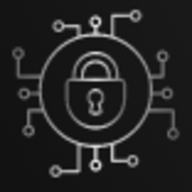Shopgoodcloth Security Rating
shopgoodcloth.com- Industry Healthcare
- Footprint 4 IPs 00
Good Cloth specializes in ethical fashion—clothing, accessories, and home goods—that are designed with consideration for workers, the planet, and consumers. The shop curates products that are made with ethically-sourced materials and have a transparent supply chain. Style, workers' rights, and the environment are the heart of Good Cloth. The company includes product journeys for each item, so that consumers can read how products are made, from beginning to end. How clothing is made shouldn't be a mystery.The goal at Good Cloth is to give a product's entire journey so that the consumer can decide for himself/herself if it fits his/her ethos. The bar at Good Cloth is that each item is made (throughout it's supply chain) in a way that is fair to workers and to the environment. Each item must be high quality, because it isn't sustainable if it falls apart. Good Cloth also creates preferred shopping categorizes to make it easier for customers to shop by their own personal ethics—such as vegan, organic, shop local New Orleans (Good Cloth's headquarters is in New Orleans), Trade Not Aid, handcrafted, and made in the United States. Customers can also shop by cost (low to high, high to low). Good Cloth wants to ensure that all consumers have access to ethically made products.
SecurityScorecard calculates cybersecurity scores based on 10 factors that reflect different cybersecurity practices and risks.

SecurityScorecard Badge
Business prospects want to know that you're maintaining a strong cybersecurity program. Show it off with a free SecurityScorecard badge.
Latest news
Qilin Ransomware Ranked Highest in April 2025 with 72 Data Leak Disclosures
 thecyberpost.com
thecyberpost.comFine-tuning vs. in-context learning: New research guides better LLM customization for real-world tasks
 venturebeat.com
venturebeat.comScaling startups in the European market
 techcrunch.com
techcrunch.comTypical Gamer’s JOGO doubles down on UEFN maps with acquisition of RHQ Creative
 venturebeat.com
venturebeat.comInvesting in overlooked European ecosystems
 techcrunch.com
techcrunch.comThe US is reviewing Benchmark’s investment into Chinese AI startup Manus
 techcrunch.com
techcrunch.comOthers in their industry
What do we measure?
SecurityScorecard collects billions of signals each week, helping organizations see risks, get more actionable information, and respond faster to keep up with threat actors. Security teams are able to react quickly to digital criminals, respond to Zero-Day incidents faster, and reduce the risk exposure timeline.
These are some of the factors we use to calculate the overall score:
Network Security
Discover open access points, insecure or misconfigured SSL certificates, or database vulnerabilities.
Patching Cadence
Understand how diligently a company is patching its operating systems, services, applications, software, and hardware in a timely manner.
IP Reputation
See the quantity and duration of malware infections, along with other factors influence the overall assessment of an organization’s IP Reputation.
Endpoint Security
Understand the effectiveness of protections in place for laptops, desktops, mobile devices, and all employee devices that access that company’s network.
How is your Scorecard calculated?
Take a look at the 10 factor categories at the core of SecurityScorecard’s cybersecurity rating methodology.
Embed security into your company DNA
Cyber risk ratings influence business activity from the loading dock to the board room. Learn all how to incorporate security ratings insights into workflows throughout your organization
Scorecards deliver real value
How do you quantify cyber risk management? Threat prevention may be hard to compute, but Forrester Consulting has done the work or you. Spoiler alert: SecurityScorecard customers realize investment payback in under a quarter.
11,000,000+ companies rated
Get your free Security Ratings report to see your custom score
Trending Scorecards
- 001shop
- Aforbes
- First General Credit Union
- 2164
- ERS Wireless
- Eskenazi Health
- ESOMAR
- Environmental Tectonics Corporation
- Ethiopian Airlines
- 375900
- Rong-sheng
- Soonest
- 3mdeutschland
- Agunsa
- EVERTEC, Inc.
- Ewave
- Examity
- Tuc
- Townofgilbertsc
- Vub
- Experts-exchange
- Extendicare Health Services, Inc.
- Abworldfoods
- 4riversequipment
- Aerodata
- Fashion Platform
- Fastcasualit
- Agency2
- Dokify
- Fauna
- Fbnsecurities
- 富邦產險518fb
- Federal Election Commission
- Feerko
- Felixspa
- Adaptready
- Fertoz
- FFF Enterprises Inc
- Seguridad Portal 2
- Ffusa
- Financial Guaranty Insurance Company
- Omitron
- First Interstate Bancsystem Inc
- FileCloud
- Filezilla-project
- Firestoneventures
- Actuasc
- 178114
- Centralre
- 209811
- Strategygen
- Choppies Enterprises Limited
- Faithfund
- First National Bank South Africa
- 658733
- Fnbmbank
- Electronic Therapy
- Budgetatl
- Downloadwink
- Fonecta Ltd
